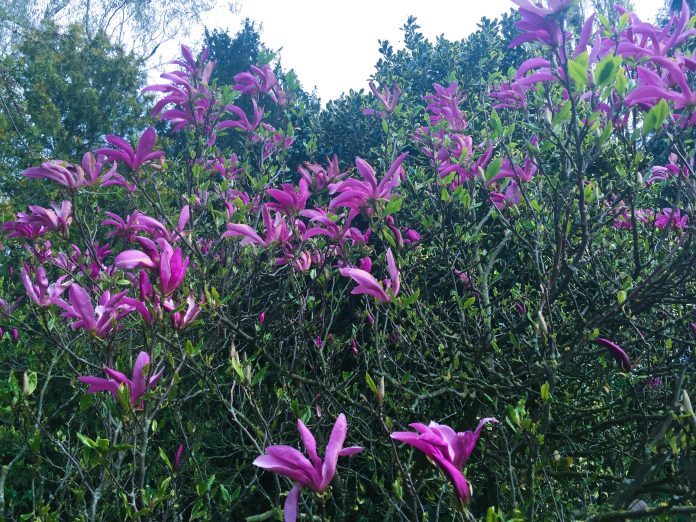Magnolia Grow Guide
Magnolias are iconic flowering trees and shrubs known for their large, showy blooms and often fragrant flowers. They thrive in a variety of conditions, but proper care ensures healthy growth and abundant flowering.
Classification
- Kingdom: Plantae
- Clade: Angiosperms
- Order: Magnoliales
- Family: Magnoliaceae
- Genus: Magnolia
Choosing the Right Magnolia
There are two main types of magnolias:
- Deciduous Magnolias – These lose their leaves in winter and include species such as Magnolia stellata and Magnolia x soulangeana. They bloom in early spring before the leaves appear.
- Evergreen Magnolias – Such as Magnolia grandiflora, these retain their glossy leaves year-round and bloom in summer.
Planting
- Location: Magnolias prefer a sheltered position away from strong winds. A spot with full sun to partial shade is ideal.
- Soil: They thrive in well-drained, slightly acidic to neutral soil rich in organic matter. Suitable soil types include loam, sandy, and clay, provided drainage is adequate.
- Hardiness: Most magnolias are hardy in USDA zones 4-9, depending on the variety.
- Flowering Months: Flowering times vary by species: Magnolia stellata and Magnolia x soulangeana bloom in early spring (March-April), while Magnolia grandiflora flowers in summer (June-August).
- Planting Time: The best time to plant is autumn or early spring when the soil is moist but not frozen.
- Spacing: Allow ample space for the variety’s mature size, as magnolias dislike root disturbance once established.
Care and Maintenance
- Watering: Keep young plants well-watered, especially during dry spells. Once established, they are fairly drought-tolerant.
- Mulching: Apply an organic mulch (such as bark or leaf mould) around the base to retain moisture and suppress weeds.
- Feeding: Use a balanced, slow-release fertilizer in early spring to support growth and flowering.
- Pruning: Minimal pruning is required.
- For deciduous magnolias, prune after flowering in late spring or early summer to avoid removing next season’s buds.
- For evergreen magnolias, prune in late winter or early spring before new growth starts.
- Remove dead, damaged, or crossing branches to maintain shape and health.
Common Problems
- Frost Damage: Late frosts can damage early blooms; planting in a sheltered spot can help prevent this.
- Scale Insects & Aphids: Inspect leaves for pests and treat with insecticidal soap or horticultural oil if needed.
- Leaf Spot & Canker: Avoid overhead watering and ensure good air circulation to prevent fungal diseases.
Propagation
- Seed: Can be grown from seed but takes years to mature.
- Cuttings: Semi-ripe cuttings in summer for evergreen varieties.
- Layering: Air layering is an effective method for some species.
- Grafting: Commonly used for some magnolia species to ensure desirable traits.
Popular Varieties
- Magnolia stellata (‘Star Magnolia’) – Compact, early bloomer with star-shaped white flowers.
- Magnolia x soulangeana (‘Saucer Magnolia’) – Large pink-white blooms in spring.
- Magnolia grandiflora – A stately evergreen with large, fragrant cream flowers.
- Magnolia ‘Susan’ – A small, late-flowering variety with deep pink-purple blooms.
With the right care, magnolias make a stunning feature in any garden, providing seasonal interest and beautiful blooms for years to come.





